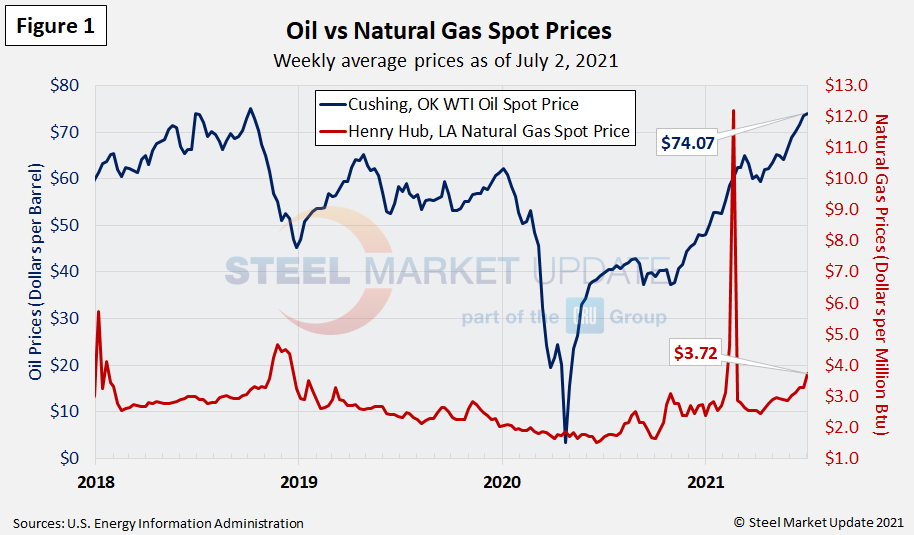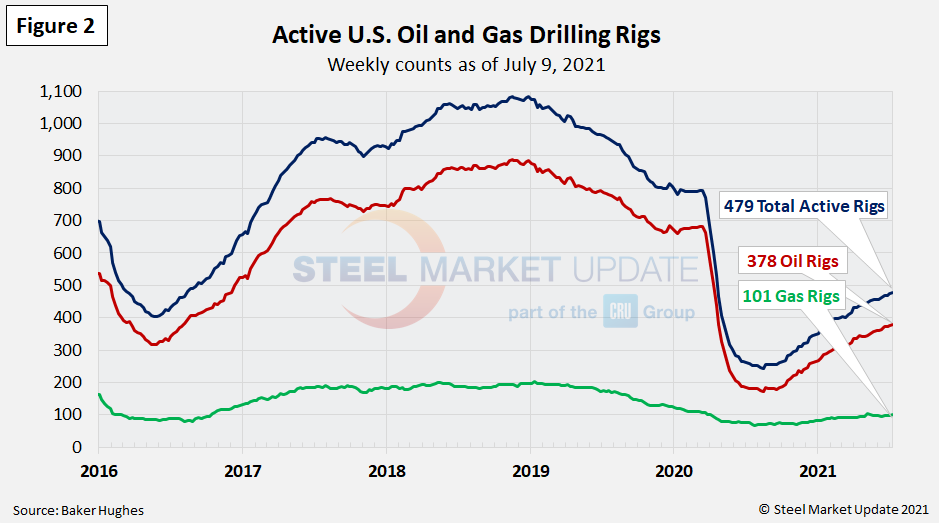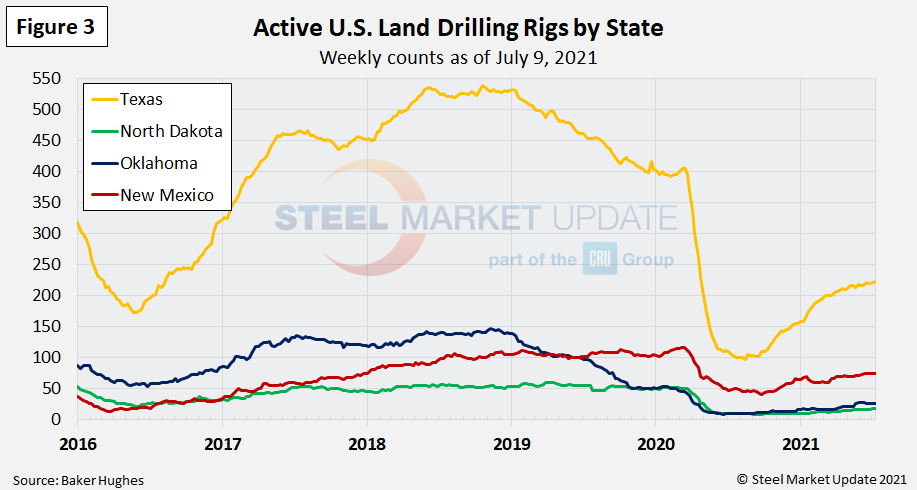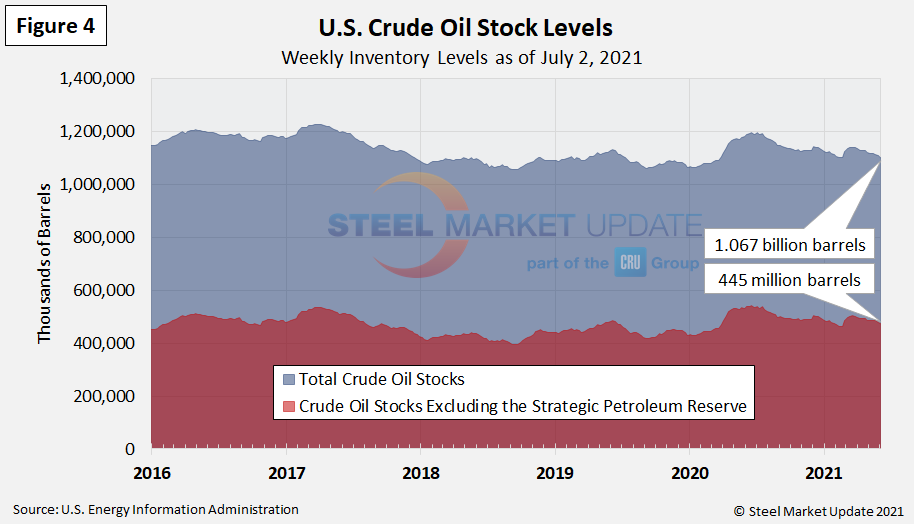Market Data

July 13, 2021
SMU Analysis: Energy Market Growing, Oil Prices at 33-Month High
Written by Brett Linton
The Energy Information Administration’s July Short-Term Energy Outlook remains subject to heightened levels of uncertainty related to the ongoing economic recovery from the COVID-19 pandemic. That big caveat aside, the increase in economic activity and an easing of the pandemic have contributed to rising energy use. EIA anticipates a mostly balanced global oil market for the remainder of 2021. Crude oil prices are forecast to remain steady through the remainder of the year, while natural gas prices are expected to slightly increase. The EIA expects oil production to increase in the coming months, eventually outpacing consumption, resulting in steady spot prices averaging $72 per barrel through Q2 2021 and averaging $67 in 2022. EIA forecasts natural gas prices to average $3.22 per MMBtu in 2021, declining to a $3.00 average in 2022. A related forecast: EIA expects regular-grade gasoline prices to average $2.92 per gallon in the second half of 2021 and $2.74 in 2022.
Spot Prices
The spot market price for West Texas Intermediate (WTI) continues to increase, now at $74.07 per barrel as of the week ending July 2. This is the highest weekly oil spot price since October 2018, a 33-month high. Natural gas prices at the Henry Hub in Oklahoma are also up, at $3.72 per MMBTU (million British Thermal Units) as of July 2. Figure 1 shows the weekly average spot prices for each product.

Rig Counts
The number of active U.S. oil and gas drill rigs continues to recover since the mid-2020 low. The count was 479 active drill rigs as of the end of last week. That total is comprised of 378 oil rigs and 101 gas rigs, according to the latest data from Baker Hughes (Figure 2). While up over recent months, active drill rigs are still down 40 percent from 793 rigs in March 2020, just prior to the coronavirus shutdowns. The table below compares the current U.S., Canadian and international rig counts to historical levels.


U.S. oil and gas production are heavily concentrated in Texas, Oklahoma, North Dakota and New Mexico, which have seen declines of 36-65 percent since March of last year. The most active state, Texas, now has 223 active rigs in operation, the highest level seen since April 24, 2020. Texas rigs had plummeted from 407 in March 2020 to 97 rigs in August 2020 (Figure 3).

Stock Levels
U.S. total crude oil stocks in 2020 surged from mid-March through July, but they have steadily declined since then. The latest level is down yet again compared to the previous Energy Update: 1.067 billion barrels as of July 2, down from 1.195 billion barrels at the same time last year (Figure 4).

Trends in energy prices and rig counts are a predictor of demand for oil country tubular products (OCTG), line pipe and other steel products.
By Brett Linton, Brett@SteelMarketUpdate.com







